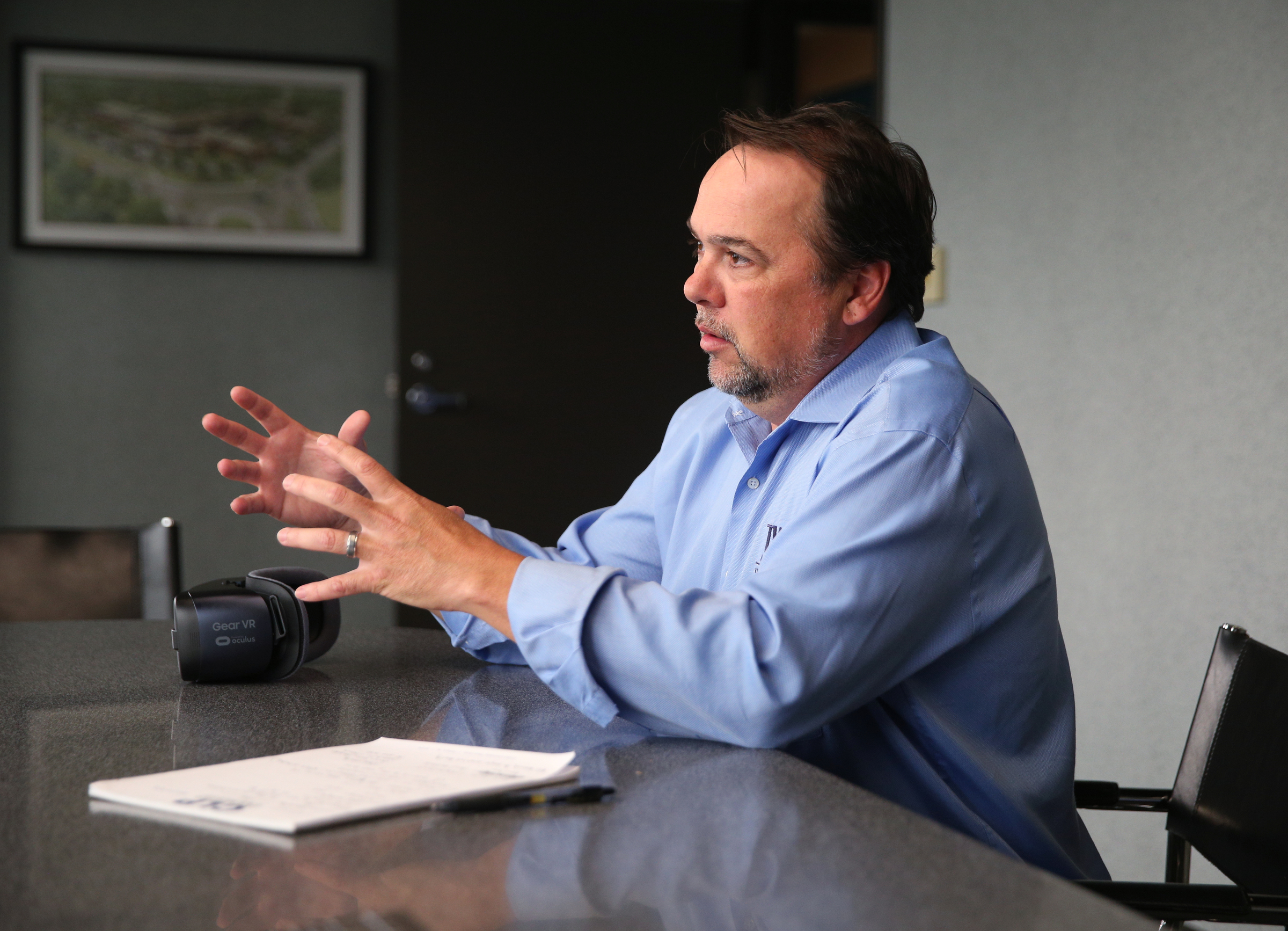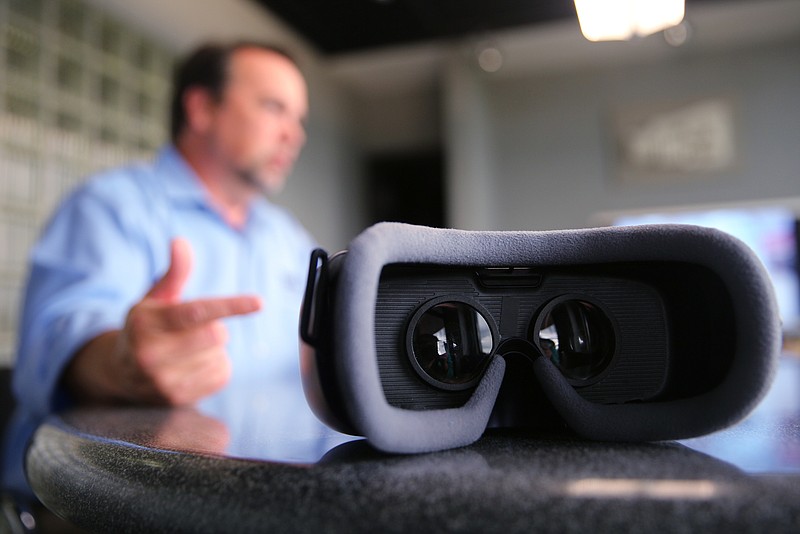 Ronnie Rahn, principal at TWH Architects, explains the benefits of virtual reality renderings Wed., May 24, 2017, from TWH Architects in the University Tower building in Chattanooga, Tenn. Virtual reality can help sell ideas to clients and help clients better envision each room within a property they've had commissioned.
Ronnie Rahn, principal at TWH Architects, explains the benefits of virtual reality renderings Wed., May 24, 2017, from TWH Architects in the University Tower building in Chattanooga, Tenn. Virtual reality can help sell ideas to clients and help clients better envision each room within a property they've had commissioned. Dennis Tumlin was looking for a way to quite literally level the playing field when he pitched a hilly industrial site north of Dayton, Tenn., to Finland's biggest tire maker in March.
"We knew we were competing against a flat site in Georgia, and our property still had a slope and was harder at first glance to visualize how a major factory might look [there]," said Tumlin, the executive director for the Rhea County Economic and Tourism Council.
Sam Wills, the Southeast Tennessee regional director for the Tennessee Department of Economic and Community Development, suggested the industrial prospects be shown a 3-D view of what the factory could look like in a finished, flattened version of the Rhea County Rail Hub South industrial park.
In only 10 days, the architects and technology team at TWH Architects in Chattanooga, a division of the Michael Brady Co., created the images that allowed top executives from Nokian Tyres to visualize their 830,000-square-foot plant on the site by looking in virtual reality headsets.
Two months after the site visit, Nokian Tyres announced it had picked the 330-acre industrial site north of Dayton for a $360 million tire production plant - the biggest private investment ever in Rhea County.
"Did virtual reality alone seal the deal?" Tumlin asked. "No. But it was very effective in showing what we can do and what could be done with this site. I think it was a real help."
The virtual reality (VR) headsets allow users to see and walk through buildings and properties in the virtual world created by the new 3-D design equipment. They can move through the space with a controller and, wearing the headset, get a full 360-degree view.
Although still relatively new, VR proponents think it could gain widespread use by architects, designers and real estate agents trying to show houses, rental properties or office layouts - even if the viewer is not on site or before anything is ever built.
The Michael Brady Co., which last year merged with TWH Architects, was one of the first architectural firms in the region to begin widespread use of 3-D modeling of its building projects nearly a decade ago.
"We're actually building 3-D modeling in our computers for building design, which helps us as designers and engineers to not only visualize how a project will look but also to be more precise in our drawings and to work out and detect in advance any conflicts or clash of things like duct work and support beams," said Ronny Rahn, principal architect at TWH Architects Inc. "But in the past couple of years, virtual reality headsets have taken that to a whole new level and really give our clients a chance to immerse themselves in whatever facility we are designing."
TWH uses building information technology developed from the Revit autodesk software. The technology not only helps designers and clients to visualize buildings before they are erected, it also offers a cheaper and quicker way to make changes.
"One of the great things about doing everything in 3-D is we get better feedback from our clients," Rahn said.
Virtual reality can replace costly artist renderings, which can run $2,500 a pop and are outdated as soon as a client asks for a change. And virtual reality headsets are getting cheaper - Facebook's Oculus Rift ships for $599, $200 less than rival HTC Vive - and could become ubiquitous in coming years as prices fall more.
"We think there's a tremendous potential to help both us and our clients with virtual reality," Rahn said.
The Associated Press contributed to this report.
Contact Dave Flessner at dflessner@timesfreepress.com or 423-757-6340.
